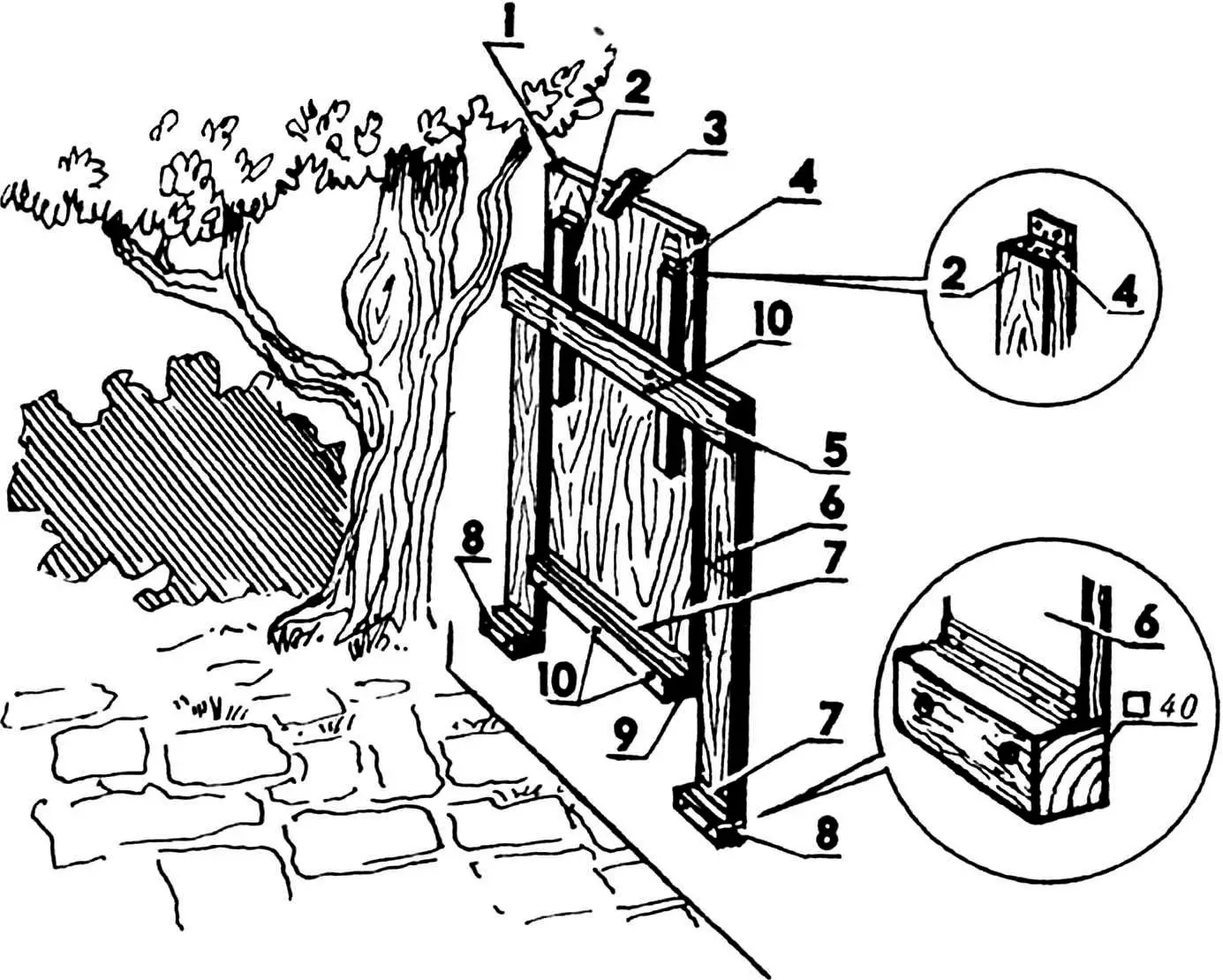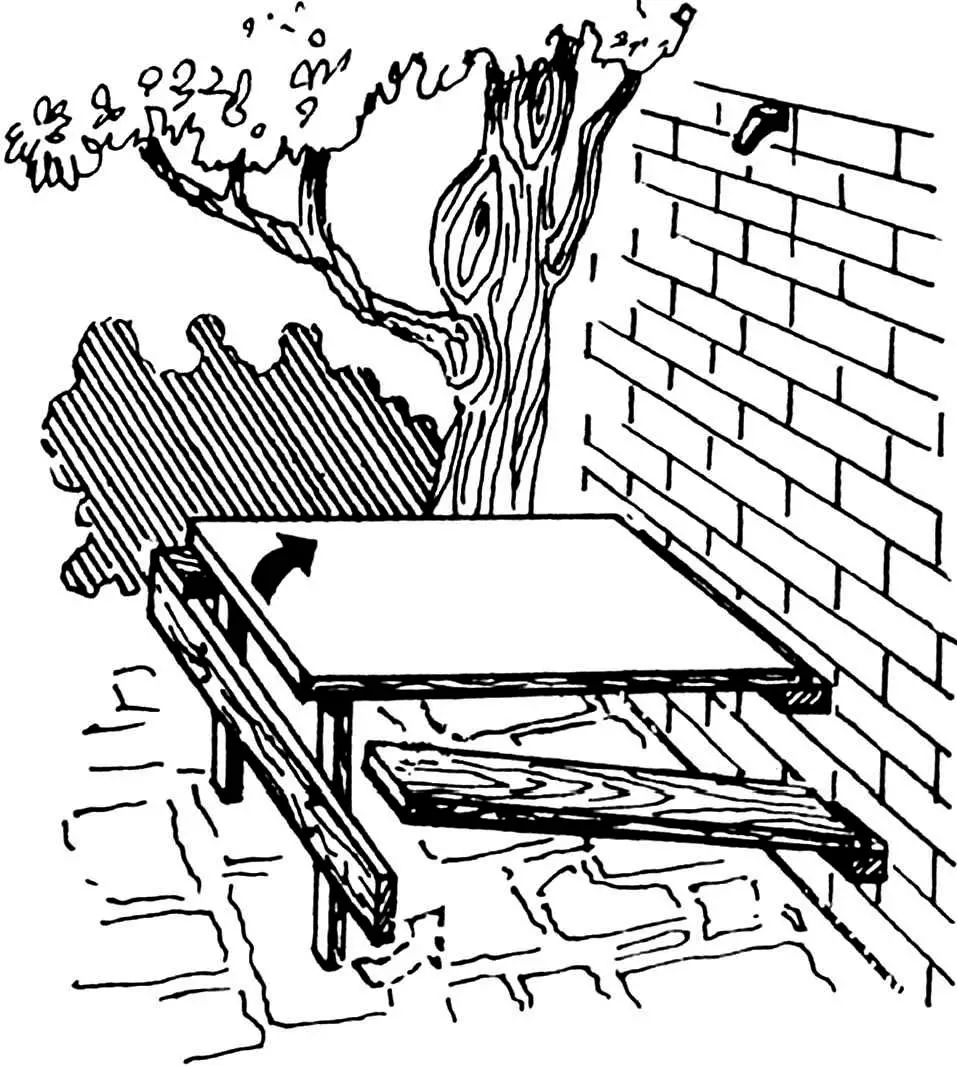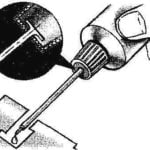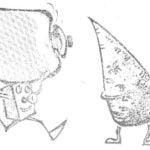It is designed for a relaxation corner on a country plot, by the wall of a house on the sunny or, conversely, shady side—wherever one prefers. This set includes a table and two benches, and what’s unusual about it is that all these items can be easily lifted and fixed to the wall as a flat package, hiding from bad weather or simply freeing up space on the site for other activities.
The basis of the set is a tabletop with two legs connected by a long board that serves as a support crossbar for the benches. The tabletop can be made from a sheet of plywood, a plank panel, or particleboard measuring 1500×1500 and 20 mm thick. The legs are wooden blocks with a cross-section of 20×40 and a length of 850 mm; they are attached to the tabletop using card hinges, as shown in the figure. The crossbar is attached to the legs with furniture bolts and nuts—this gives the connection the necessary rigidity. The board dimensions of 2000x250x15 mm are chosen so that when the set is unfolded, both benches, which have no legs of their own, rest on its ends. The other edge of the tabletop rests on a wooden block with a cross-section of 40×40 mm screwed to the wall, to which it is connected by a piano hinge that is offset from the wall by the thickness of the tabletop—for free installation in a vertical position.

Two similar but shorter blocks are attached to the wall as supports for the benches, which are boards measuring 1500x250x40 mm, also connected to the blocks with piano hinges offset from the wall by the thickness of the bench. The opposite ends of the benches freely rest on the leg crossbar board. It turns out that the set has only two legs.

1 — tabletop; 2 — legs; 3 — swivel bracket; 4 — card hinge; 5 — leg crossbar; 6 — bench; 7 — piano hinges; 8 — bench support blocks; 9 — tabletop support block; 10 — furniture bolts;
below — dimensions of table construction elements
To lean the entire set against the wall, it is enough to lift the tabletop. In doing so, the legs begin to tilt on their hinges, and the free ends of the benches being raised slide along their crossbar—all items gradually move to a vertical position, gathering at the wall as a single flat package. Here they are “awaited” by a swivel bracket that fixes the tabletop, and thus the entire set.
Unfolding occurs in reverse order: by turning the swivel, we release the tabletop and, holding only it, lower the entire set down.
«Modelist-Konstruktor» No. 3’2001, B. REVSKY



